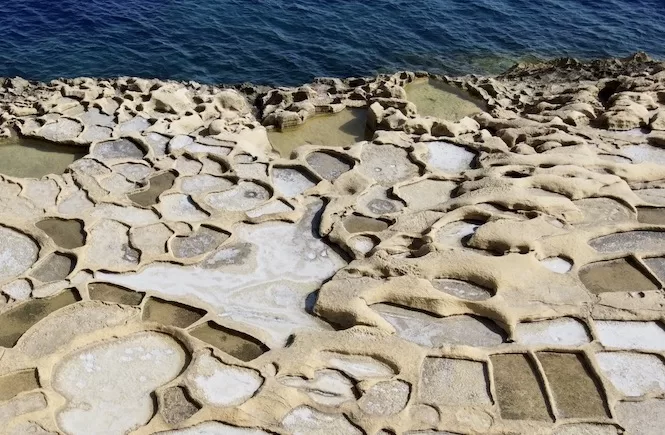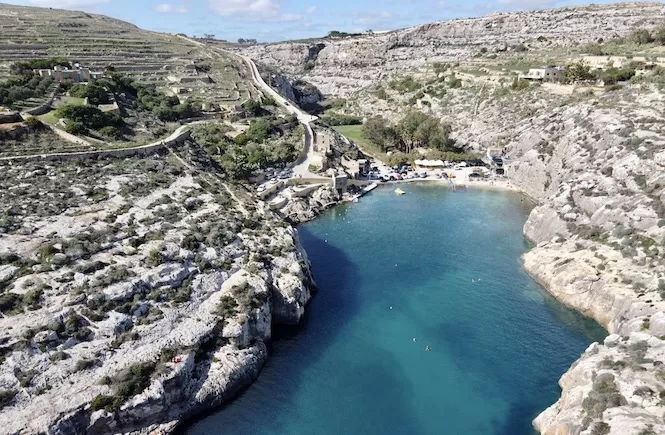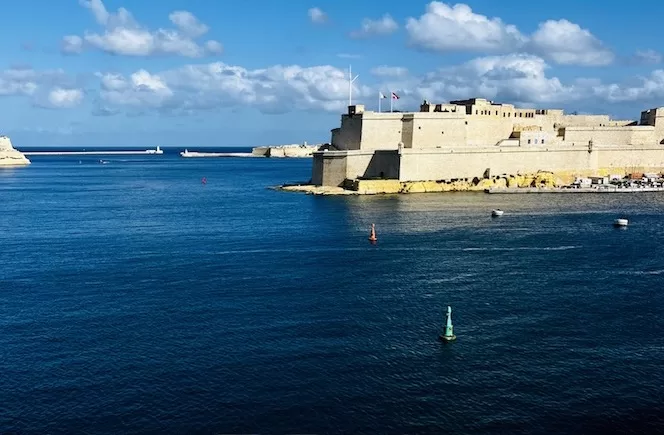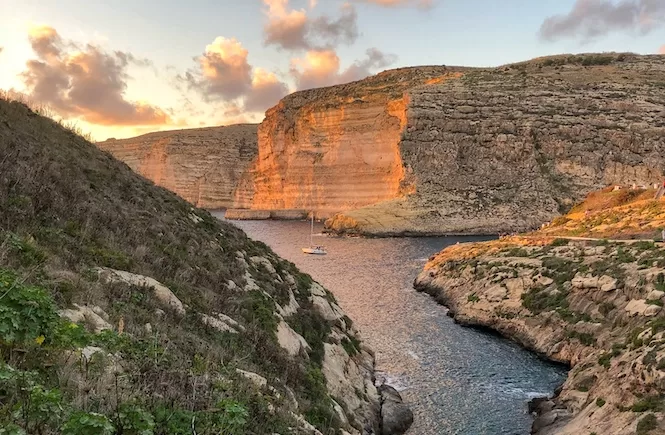Just a quick heads up – some of the links I share on this site are affiliate links. That means if you click on one and make a purchase, I may earn a small commission at no extra cost to you. Your support through these links helps me create valuable content.
Gozo salt pans are an iconic cultural landmark worth seeing. They are a checkerboard of rock-cut shallow pools used for centuries. Salt pans at Xwejni Bay are not only pretty but also a great place to learn about salt harvesting. You can also buy authentic, natural salt to support local farmers.
Malta became my home in 2011. I love Gozo, exploring its rich history and nature. I often visit Xwejni Bay and hike by the sea. It’s perfect for capturing stunning photographs!
In this post, you’ll discover the fascinating tradition of salt harvesting and receive some helpful tips for your visit.
The Importance of Salt Pans in Malta
As a natural preservative, salt is a life-sustaining mineral. In ancient times, it was so valuable that it was used as currency.
The Maltese have harvested and processed sea salt for centuries using seawater, sun, and salt pans. Families have passed down these traditional methods from generation to generation.
A salt pan is a shallow reservoir dug out of limestone rock to collect seawater. As the water evaporates, white salt crystals remain. The crystals are then dried and packed into salt pouches.
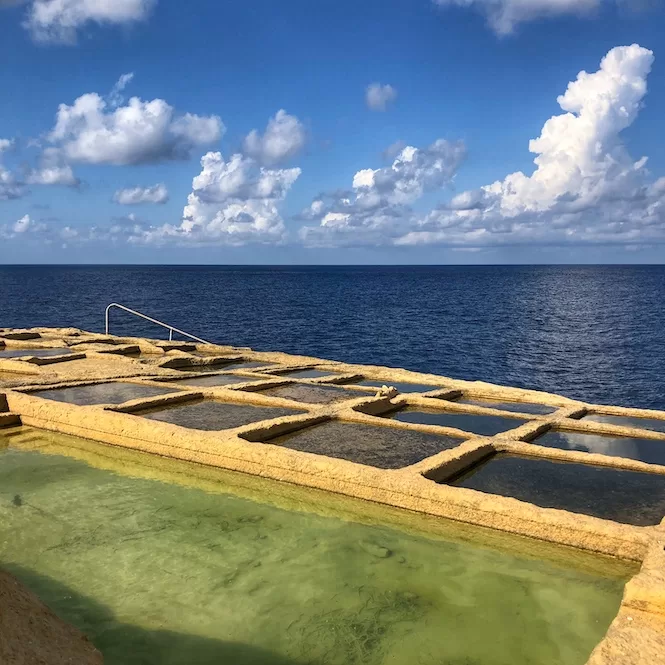
For years, Malta’s salt pans have provided salt to meet the local demand. They also gave employment and business opportunities to many islanders. It’s also more sustainable to collect salt the traditional way. They don’t need large amounts of energy or resources.
Sea Salt Production in Malta
There are many salt pans along Malta’s and Gozo’s coast where salt is collected. Historically, salt has been sold by grocers. However, in recent years, gourmet shops have sprouted, selling plain and aromatic salt in nice jars. It’s a great souvenir from Malta.
Buying authentic natural sea salt from the Maltese islands supports local farmers. It is also healthier than refined table salt.
Refined table salt often contains additives that have no health benefits. Natural sea salt has over 80 minerals and elements. It keeps electrolyte balances while stimulating digestive enzymes. So it’s a healthier choice.
Gozo Salt Pans in Xwejni
The most famous salt pans are in Xwejni Bay, near Marsalforn in Gozo. These salt pans are known for their picturesque view. Yet, they are also old, used for more than 350 years.
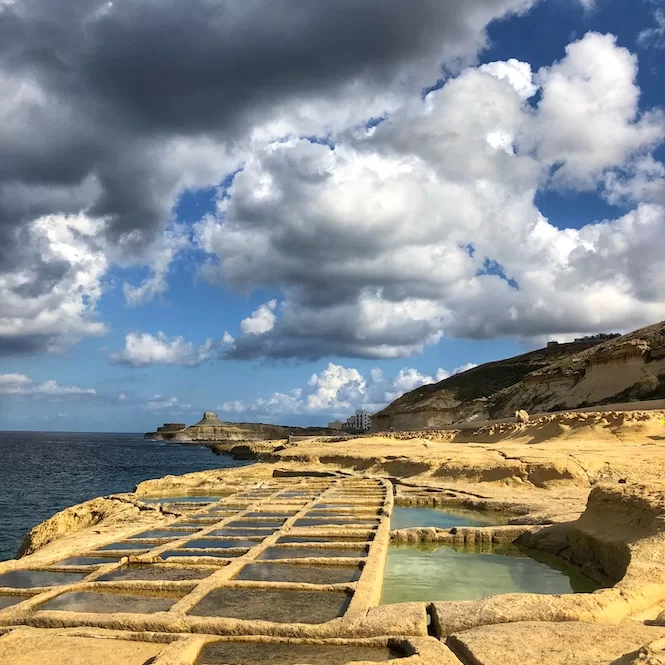
The Xwejni salt pans stretch three kilometres along the coast. They are made of shallow, rectangular pools carved into the limestone. From the above, these pools look like a giant checkerboard, each filled with seawater.
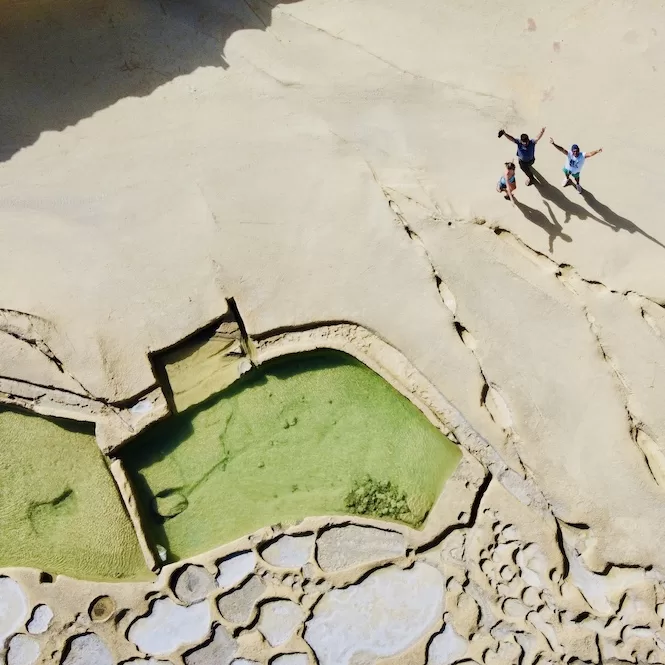
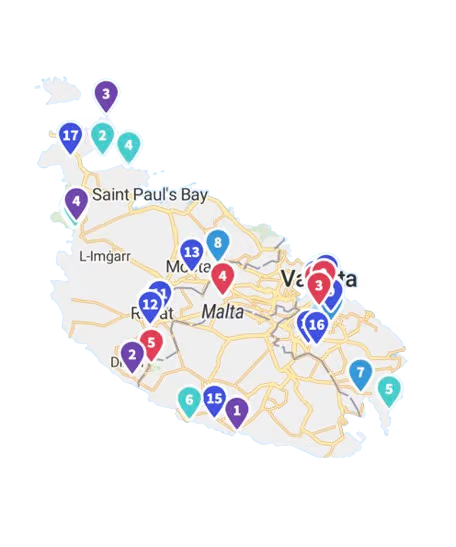
Get a FREE Attractions Map
Planning a trip to Malta, Gozo, or Comino? Get this free interactive map filled with insider tips, Google Maps links, and more.
Xwejni’s Salt Production Process
Xwejni salt is collected from mid-May to mid-September every seven days. Storms and rain can disrupt the collection process, so it is best harvested when it is hot and sunny.
Farmers pour seawater from larger pools into smaller salt pans. They use larger pools because the water there is already highly concentrated. Over seven days, the water evaporates, and salt pans are filled with salt crystals.
The salt is then swept into tiny heaps with a brush and placed in buckets. It is then transferred to a flat surface and left to dry for 24 hours. Once dry, salt is packed into 30-kilo bags and stored for consumption. The harvested salt is then sold locally and exported to other countries.
How about staying in Gozo in a villa with a private pool? Discover your dream spot with my guide to the best villas for every budget.
Visiting the Gozo Salt Pans in Xwejni
There is no better place to see salt pans than in Xwejni Bay, close to Marsalforn. You can explore the area and learn about salt harvesting. The shopkeeper will gladly explain how salt is collected traditionally. However, it is important not to step onto the salt pans and to respect the signs.
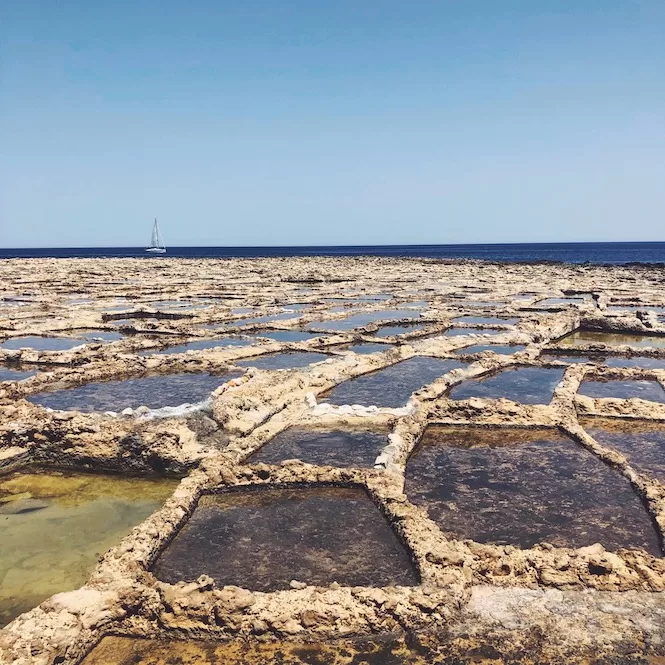
Getting There:
- Location: link to Google Maps
- Nearest bus stop: Xwejni – 10 mins away by foot
- Frequency of the buses: every 30-45 minutes via Victoria
- Parking available: It’s best to park in the bay, along the road (in summer, parking is limited, so it’s best to arrive earlier).
Need advice on renting a car in Malta? Here’s my guide with insider tips on everything you need to know.
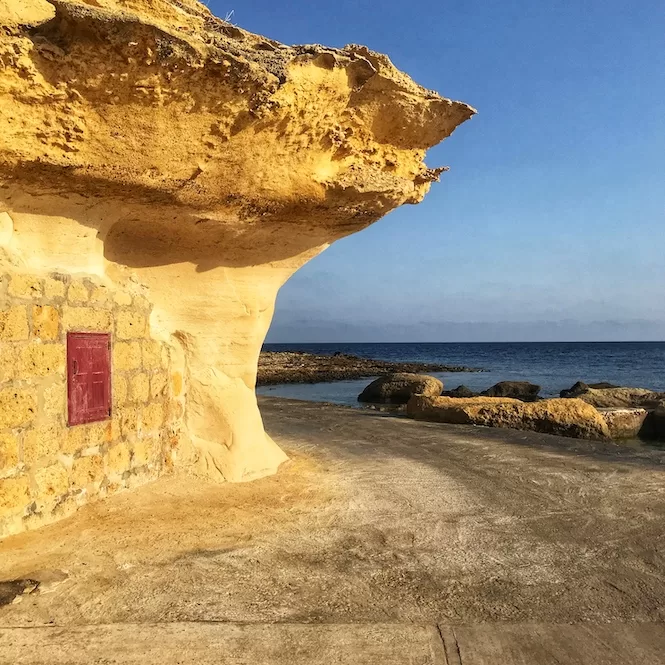
Join my FREE private Facebook group, Malta Travel Tips, where you’ll find helpful resources and connect with other travellers just like you!
Gozo Salt Pans: FAQ
How do salt pans work in Malta?
In Malta, salt pans function by a simple yet effective method. They are shallow reservoirs. They are carved out of the coastal limestone to collect seawater. The sun’s heat evaporates the water for several days. It leaves behind salt crystals.
These crystals are then collected, dried, and packed for use. This old process is energy-efficient and sustainable. It relies only on the sun and sea.
Where can you find salt pans?
Salt pans are a common sight along the coasts of Malta and Gozo. The most renowned ones are located in Xwejni Bay, near Marsalforn on the island of Gozo. The salt pans stretch for about three kilometres along the coast. They form a striking checkerboard of shallow pools.
How old are the salt pans in Gozo?
The salt pans at Xwejni Bay are ancient, used for 350 years. They hold cultural and historical importance for Malta and Gozo.
What is the history of the salt pans in Malta?
Maltese people have been making salt using seawater and sunlight for generations. This traditional practice in Malta goes back centuries. Salt has been highly valued in history, even used as a form of currency because of its preserving qualities. The tradition of salt harvesting using seawater and sunlight continues in Malta to this day.
How do you separate salt from salt pans?
After the seawater in the salt pans evaporates, it leaves behind salt crystals. Workers gently sweep these crystals into heaps using brushes and collect them in buckets. The salt is spread out on a flat surface to dry for about 24 hours before it is carefully packed into bags for storage and later use.
What is the significance of salt pans?
Salt pans are important for many reasons besides just making salt. They show a sustainable and eco-friendly way to harvest salt that doesn’t need a lot of energy or resources. They also honour traditional practices and skills that have been passed down through generations. In addition, they create jobs for locals and help Maltese farmers when people buy natural sea salt from these salt pans.
Anyone interested in its history and culture should visit the Gozo salt pans. Aside from being a fascinating attraction, the Gozo salt pans are also a beautiful area to explore and walk around. You can also hike to the Ghasri Valley, a magnificent gorge. It’s just a kilometre away.
If you liked this guide, check out my other posts about things to do in Gozo, visit secret Gozo beaches, discover Xlendi, Mgarr Ix-Xini or Dwejra Bay.
Also, check out some amazing tours you can have in Gozo:

